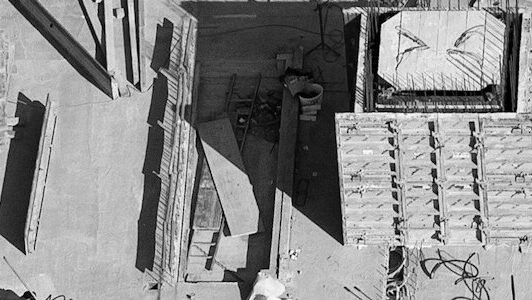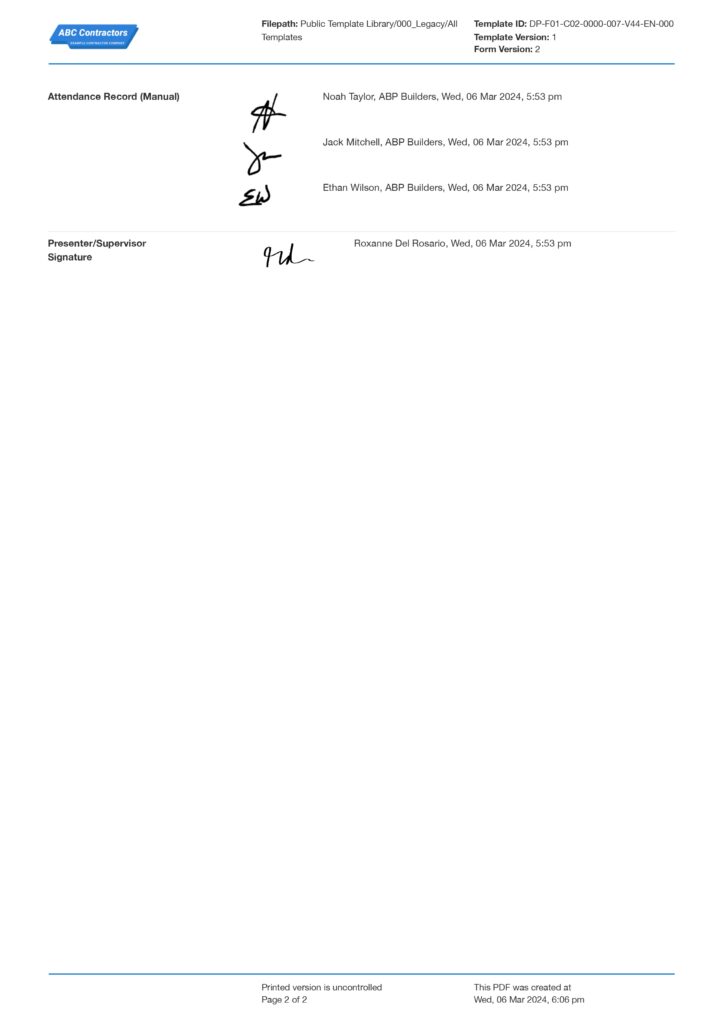Dashpivot Article – Safety Precautions During Concrete Work
Safety Precautions During Concrete Work
In this post, we will go through common and important concrete work hazards and the safety precautions required during any concrete work. You'll also see some proven methods and resources to strengthen these safety measures.

Did you know that each year, thousands of headcounts are added to construction fatality and major injuries all over the world?
This rate is five times more than the manufacturing industries and unfortunately, not just a record for the construction workers but the public. Safety precautions during concrete work are vital.
It helps manage risk for the workers, reduce the financial impact of the companies because of the damages and the lost days, and guarantee the safety of the citizens.
Concrete work is one of the primary and essential jobs in construction that consists of different activities. It involves site preparation, mixing of materials which are, water, cement, aggregates (like sand and gravel) to result in a cast that is necessary in building structures used for constructing buildings, roads, and bridges and then the process of pouring and finishing the concrete.
Concrete work also involves removing and repairing of existing concrete structures. This poses multiple health and safety hazards that requires consideration to ensure workers are protected and the business is secured and thus it is highly necessary to provide safety precautions.
What are the common Hazards and Safety Precautions During Concrete Work?
Workers exposure to Hazardous Materials
Cement and silica are the top hazardous materials that endangers the construction workers when exposed with its dust.
Cement is a binding material used to produce concrete. It generates dust that can caused chronic lung diseases, cancer, and health issues in the stomach and colon. Silica, is also used in concrete, bricks, tiles and mortar. Generally, it is found in aggregates but at times added on purpose to concrete (i.e silica fumes) to achieve good compressive strength for the concrete and help in resistance to corroding and to build a long lasting structure.
Workers exposed to cement silica during concrete work produces silicosis hazard which is a fatal lung disease from breathing tiny silica dust that are found not only in the silica itself but in the air when the crystalline silica material in concrete are cut, drilled or sanded.
Safety precautions for Cement and Silica Exposure during Concrete Work
If unable to eliminate silica in construction, there are different methods to minimizing exposure by using wet methods like applying water in dusty areas by wet sweeping, using continuous flow of water to the equipments used to cut or drill, isolating the area, using local exhaust or vacuum system to remove airborne dust in the surroundings.
The use of respiratory personal protective equipment such as P/R/N95 filter masks or FFP3 dust mask is essential when exposed to cement or silica. It is also required that workers use gloves, high waterproof boots, goggles and protective clothing for skin and eye exposure. Employees should always be reminded of the risks incorporated with silica dust exposure and they should have the correct and good and tight fitting respiratory PPEs.
Ergonomic Hazards during Concrete Work
Concrete work is generally considered a manual job in a sense that while equipments and tools are used, the job largely depends on the physical labor of the person doing it. Ergonomic hazards include lifting heavy loads during site preparation or gathering of materials, bending or twisting the back, reaching overhead, and moving in awkward positions. These hazards endagers the manpower for skeletal health issues or musculoskeletal diseases like back pain, carpal tunnel syndrome and more.
Safety precautions for Ergonomic Hazards during Concrete Work
The safety measures used for ergonomic hazards are using ergonomic tools and the mandate of compliant safe techniques when doing physical labor which includes the proper lifting of loads–loads should be positioned close to the body at waist level, no stacking of loads that can block your view, keep back straight during the lift, follow maximum safety limits, and getting a good grip. Workers who are involved in heavy lifting should be provided safety shoes and gloves and should be reminded everyday for the ergonomic techniques for their own safety. Apart from this, workers should not be forced to carry heavy objects and appropriate equipment should be in placed.
Strengthening Safety Precaution in Concrete Work
Safety precautions are necessary and mandated to offset the work related risks during concrete work. With this, it is important for organisations to strengthen it and make sure it is conformed to.
Here are some of the ways to ensure these precautions are strictly adhered to:
Implement periodic Safety Training
How frequent are you doing safety training? Studies show that accidents in the workplace are ordinarily caused by the lack of safety training and often times boil down to the attitude and willingness of a person to follow the safety rules that are implemented on site.
As incidents not just happen to new workers, onboarding safety training is not enough, teaching the importance of safety must be periodic – training should be done as frequent as possible, this also includes updating the team of the newly discovered potential hazards and promote awareness to it. Consistently remind the workers of the results of unsafe behaviours and remind them of the purpose of the existing controls. It is also effective that it is done by an experienced worker that can share real life situations they were or others are exposed to that they've witnessed.
Conduct Internal Safety Audits
You can strengthen the safety precaution during concrete work by conducting internal safety audits. Internal safety audits are systematic reviews done by supervisors or management to confirm if the site is adhering to safety standards. This is also efficient to do months before an external audit so that findings can help evaluate of the effectiveness of the safety initiatives in concrete work and ensure it complies with legal requirements.
Utilise this construction site safety audit checklist made using Dashpivot. It is free and editable for your own audits and operations in concrete work. It is designed specifically for construction sites, and comes pre-built with a number of standard sections and questions, which can all be easily customised too. You can use this 'smart' checklist directly from site on any mobile or tablet, control it from computer, and also export it as a privately branded PDF document for sharing and emailing in a single click.
Use Toolbox Talks during Concrete Works
Concrete workers are very familiar with paperwork including concrete pour cards checklists and other daily processes.
Toolbox Talks are brief safety meetings conveniently done daily in the site. It's a scripted supervisor tool that summarises all the common hazards and controls implemented during concrete work. Using digitalise toolbox talks saves time and efforts as it streamlines the process by being able read the talk using your tablet or mobile and take notes.
You can see how the toolbox talk below covers the safety precautions during concrete works, amongst other important items.

Improve your concrete safety toolbox talks with free and customisable forms
Remind your team on safety precautions during concrete work with customisable toolbox talk forms
You can easily customise and specify the most dangerous safety concern during concrete work like if concrete has silica that can affect their lungs' health, promote urgency by sharing fatal stories of how cement dust exposure can cause cancer and other health issues so they better wear their PPE or the latest incidents in the work site.
These safety talks can prompt for discussion and action item and in this form you can detail in the Yes/No field if there are any discussion notes raised by the attendees. Do you need to show a video or a photo to remind the workers of the proper lifting technique? Upload and take it easily using this form.
Access the toolbox talk using any device and add photos or video evidences if necessary using Dashpivot. Are there additional hazards or newly implemented controls? You can update the toolbox talk form and open it the next time with the latest version. Any of your toolbox talks captured with the toolbox talk app or software can be instantly download, shared or printed in PDF or spreadsheet format - and comes attached with your company logo and colours to keep everything looking neat and professional. This cloud-based digital tool can help the presenter easily remind workers about concrete safety.
And, you can save time in sign off by contacless scanning of Sitemate Digital ID card for both the worker and the presenter.
Summary
In this topic about safety precautions during concrete work, we went through specifying the common hazards during work as the safety measures done to mitigate them. In the end, because of the importance of safety in concrete work, we highlighted some of the best ways to strengthen the safety precautions which are implementing periodic safety training, conducting internal safety audits and utilising digitalised toolbox talk forms using Dashpivot.

Safe Work Method Statement for Concrete Cutting template
Concrete cutting (and other cutting) is some of the most dangerous work on any project or site. Improve cutting safety using this cutting SWMS.

Safe Work Method Statement for Concrete template
Use this flexible template to create and maintain a SWMS for concreting works, including concrete delivery, slab and more.

Job Hazard Analysis Concrete Pouring template
Concrete pouring and pumping has its own set of potential hazards. Keep them in check with the Concrete Pouring Job Hazard Analysis template.

